|
Directed by Rufus Norris Set Designed by Rae Smith Costumes Designed by Katrina Lindsey Projections by 59 Productions Plot SummaryObviously this production was based on Lewis Carroll's Alice in Wonderland. It has been quite cleverly adapted into a musical in which Wonderland is a video game. Ally, the black, female, teenaged heroine, is the child of recently divorced parents who has had to move with her mom to a new flat, in a new neighborhood, go to a new school, and make new friends, and it's not going well. She misses her dad, who has an online gambling addiction and lost all the family's money. Ally is being bullied at school, and doesn't want to leave her room or talk to her mum about her problems. She wants to be anyone other than herself. Her phone is her only friend. She searches the internet for "be someone else" and finds Wonder.land where there are no rules other than "No Malice" toward yourself or anyone else. She creates her avatar Alice to be completely different--a white girl with blonde hair--who's everything she's not: smart, pretty, thin, and brave. She plays in Quest Mode and encounters others' avatars that she befriends: Dee and Dum, Humpty, Mock Turtle, Dodo, Caterpillar, and Mouse, each person having his/her own set of problems with their parents. The gang discovers each other's weaknesses and insecurities and accept each other regardless of their lack of self esteem. They have leveled up and go on to the garden. Ally's teacher takes up Ally's phone because she's playing Wonder.land in class. Ally doesn't lock her screen, and Mrs. Manxsome starts playing as Alice. She changes Alices' hair and clothes (to red), buys in-game accessories, and proceeds to conquer the online world as The Red Queen. Ally discovers Mrs. Manxsome has her phone and sneaks into the school to try and steal it back. Meanwhile, Red Alice alienates all her friends, and starts beheading them. Alice is going to be deleted from the game for breaking the one rule: No Malice. Ally pleads with the game to save her avatar Alice, since it wasn't her fault, to no avail. Alice apologizes to her friends before she disappears. Ally learns to be happy in the real world with her family and spends less time online. Production GalleryPhoto Credit: Brinkoff and Mogenburg, National Theatre The set was amazing. The National stage has a revolve but it wasn't utilized. Instead, all the set pieces and furniture were on wheels and either rolled by remote control or by actors wheeling things around. Most of the set was done by projections, which is getting more and more popular these days. It worked equally well for the video game animations as it did for the backgrounds of the real world. The floor is painted with a Cheshire Cat image that gives a spirally, off kilter effect to all the scenes. These photos are of the "real world" of Ally's new neighborhood, flat, and school. All of the actual set pieces were painted in grayscale, iwith the only color being in the costumes and the projections of Wonder.land. As the show goes on the colors and characters of Wonder.land invade the grey of the real world more and more. The whole video game aesthetic was heightened with the sound and lights making all the familiar beeps and boops and bings with the lights adding to the pixelated quality of things on the screen. This is the sequence of Ally making her avatar, Alice, which she wants to be completely different from herself. The whole time, the narrator's chair is running around Ally's bed like it's a remote controlled car, doing complicated circles and spins. Costume GalleryPhoto Credit: Brinkhoff and Mogenburg, National Theatre Katrina Lindsay's costume design sketches As I said before, all the real world costumes are in greyscale. Ally and her friends were black and white school uniforms with exaggerated stripes and piping accenting the collar and lapels. Alice's costume is quite ingenious. Her skirt is an enlarged Elizabethan ruff, which gives it a tutu like effect. She's wearing ruffled lacy bloomers underneath, and the blue bodice is cut like a Tudor bodice worn over a chemise with puffed sleeves. In an interview with Vogue, designer Katrina Lindsay points out the English fashion designers whose collections inspired her design of the costumes--Alexander McQueen, Gareth Pugh, Burberry Prorsum, and Christopher Raeburn. When Alice becomes the Red Queen, she gets the same costume, just in red leather. The Caterpillar is played by one actor and six chorus members, all of whom are individually costumed in a large oval shape to represent each segment of the caterpillar body, so each segment can spin and dance independently of each other. Dee and Dum are also in an overlarge dryer hose like silhouette using black and gold in opposite locations. Alice's teacher, Mrs. Manxsome, looks a lot like Cruella DeVille in her black and white houndstooth suit, that later on opens to reveal red lining and a red dress underneath. The Mock Turtle was so unhappy with her avatar, that she "trashed" it and appears wearing the trash can a la Oscar the Grouch. The Doormouse is giant and flat in a sad Spongebob Squarepants way. Humpty is in schoolboy clothes with shorts and long socks holding a giant white balloon that represents her head. The White Rabbit is in all white with giant cylindrical ears (that look more like tampons than ears honestly) and a fencing mask type helmet for a face. He wears black and white two tone oxfords and jodpur inspired pants to create the bunny haunches and a tiny Elizabethan ruff for a collar. My overall impression is, Wow look at all that awesome tech and design! And then, I didn't really like any of the music. Meh. Would I watch it again? Probably not. I'd rather just look at photos. I already live in a house where there are video games going all the time and I'm just not into the whole scene. It's a great adaptation and a great message and would certainly be more meaningful to kids who do stay online all the time to escape the real world, but to this Gen Xer, it's just too much sensory overload.
0 Comments
Written by Shahid Nadeem Adapted by Tanya Ronder Scenery and Costumes by Katrina Lindsay TrailerPlot SummaryTaken from The National Theatre's Learning Guide to Dara: "The play's action begins in 1659, in Mughal India. The imperial court is a place of opulence and excess, with music, drugs, eunuchs and harems. Two brothers, Dara and Aurangzeb, whose mother’s death inspired the Taj Mahal, are heirs to this Muslim empire. Now they fight ferociously for succession. Dara, the crown prince, has the love of the people, and of his emperor father; but the younger Aurangzeb holds a different vision for India’s future. Islam inspires poetry in Dara, puritanical rigour in Aurangzeb. Can Jahanara, their beloved sister, assuage Aurangzeb’s resolve to seize the Peacock Throne and purge the empire? In an author's note in the published script, Ronder writes: 'My brief was to take Shahid Nadeem’s play and adapt it for a National Theatre audience. We set out, myself and director Nadia Fall, to unpack the events cited in the original play, to educate ourselves, and to recreate the story in a way that didn’t put our audience at arm’s length, able to write the drama off as a story that was not theirs. The tale of Dara and Aurangzeb is one which a Pakistani or an Indian audience would have preexisting knowledge and some ownership of. A story, albeit differently told across borders, which children all over the Indian subcontinent will have heard at school or at home, (perhaps akin to our connection in Britain to Henry VIII or Elizabeth I), but that very few of us in the West know about. ... The result is a more recognisable shape of play; it has expanded to five acts, it starts before the original begins and ends several decades later. I have added in a trial scene to give Dara the voice I think we need to hear, and added various characters and storylines, all taken from or inspired by historical facts – Itbar and Afia, Murad, Mian Mir, Hira Bai and Aurangzeb’s relationship with her – and also incorporated a childhood for the brothers and sisters of this Mughal court. All in an attempt to round the story out, to make it a fairer fight between the brothers and to hopefully give our audience the psychological and emotional complexity they are used to.'" Katrina Lindsay, DesignerProduction galleryPhoto credit: Ellie Kurttz and National Theatre The beauty of the set is its openness and the cleverness of using the decorative screens to transition between scenes while also changing time and place. The steps provide levels while the lighting and gobos provide patterns on the floor. Musicians are kept both on stage and on the balcony above stage left. costume GalleryPhoto credit: Ellie Kurttz and National Theatre
The costumes are opulent, saturated, and many layered. The fabrics are both rich and delicate with embroidered and bejeweled details. As I am continuing to work my way through the National Theatre Live archive, I've discovered that not all their offerings are to my taste. I know, it surprised me too. Also, there are many productions where the acting/directing are superb, but the design isn't much to write about. Not that it's bad, just that it takes a huge backseat to the performances. I've watched 15 of the 30 so far and I am realizing that I'm not going to be blogging about all of them. So here's a short summation of what you won't be hearing about and why. Devised Productions at the Old VicJan Eyre and Peter Pan were "devised productions" directed by Sally Cookson and staged at the Bristol Old Vic Theatre. They are experimental pieces that use the same acting company with minimal set and costume pieces. I didn't like these productions for the odd staging, but especially for the low tech approach, especially when the work you are adapting is a period or fantasy piece, there should be spectacle. And honestly, Jane Eyre was waaay too serious and Peter Pan was waaay too silly for me. Also, the actor playing Peter Pan looks to be a man in his mid to late 50's and is costumed like Rik Mayal in Drop Dead Fred, which just makes the whole thing really creepy to me, even with the actress playing Wendy looking to be in her mid to late 30's. She's the same actress who plays Jane Eyre, so again with the age problem of being entirely too old for the character. Reading the reviews, the critics loved it, but I couldn't get past the whole panto-esque quality to it. Perhaps it's just that I'm American and don't understand English Panto. Tennessee Williams at the Young VicCat on a Hot Tin Roof and A Streetcar Named Desire were both staged at the Young Vic and directed by Benedict Andrews. The first problem with both productions is the modernization. There are no streetcars or tin roofs in this modern world. The longing for the genteel Southern way of life that is slipping away in the world of the play doesn't translate when the time of the play is the twenty-first century and that way of life is no longer slipping away, it's dead and buried. Also, I just think the English performers don't understand the Southern US aesthetic of cotton plantations, college football, and former beauty queens or they would realize that modernizing these plays doesn't work. And although UK training is famous for voice work, to someone who was born and raised in the South, their accents were not convincing, especially the men. Also, both Paul Newman and Marlon Brando are manly men, and although they cast well-muscled men in those roles, no amount of tattoos will turn you into Stanley or Brick. It's an attitude, a confidence, an arrogance that maybe just doesn't translate to English men. I don't know. Specifically, I love Gillian Anderson, so I hate to say this about her acting, but her Blanche DuBois' accent is the worst of the lot. And I know that Vivien Leigh was also English, but her voice work was perfection, maybe because she did Gone with the Wind first. Also, I love Colm Meaney, but he is sooo not Big Daddy. And Maggie the Cat is supposed to be a sex kitten--duh!-- that any heterosexual man could not resist. The actress that plays Maggie in this production needs to eat a sandwich. I know our current ideal of feminine beauty is basically a heroin junkie super model, but that doesn't work for this play. I normally think British actors way out-class American actors, but in conclusion, I think these British actors should leave Tennessee Williams' to the Americans and Vivien Leigh. Must See PerformancesKIng Lear, 2011Directed by Michael Grandage Scenery and Costumes by Christopher Oram Derek Jacobi as King Lear King Lear was staged at the Donmar Warehouse. This was not a modernized version per se, but was costumed in simple, dark robes on everyone, making it very difficult to tell the characters apart. The scenery was just whitewashed walls and floor. There were no other set pieces. The best tech in the show is the storm in Act 3 scene 2. The thing that set Derek Jacobi's Lear apart from all other Lears, is that it was clear that Lear was suffering from dementia. Now, maybe this is just my interpretation clouded by my mother's death from Fronto-temporal Dementia recently, but that's how I read it. I suppose if I went back to 1988 and watched Jeffrey Dench (brother of Judi Dench) in our Aggie Player version of King Lear, I might feel the same way about his performance. Jacobi's Lear was a man who after making one very stupid pronouncement, was suddenly changed in personality so much so that his children and oldest friends are surprised by it and don't understand that in this state he can't be reasoned with. Once he leaves his palace and moves his retinue to his daughter's, his dementia only gets worse. He's strange and prone to angry fits, he's violent and childish, and he doesn't know himself or his servants anymore. The most interesting choice for me was the "Storm" scene which he chose to whisper his speech as an inner monologue but was amplified and echoed through the sound system while the "storm" levels receded into the background and only "raged" while Jacobi paused in his speech, until both storm and speech rose to thunderous levels by the end. Antigone, 2012 Adapted by Don Taylor Directed by Polly Findlay Scenery and Costume Designed by Soutra Gilmour Jodie Whitaker as Antigone Christopher Eccleston as Creon There was more to the design elements in this production than the other two, but still not much to speak of, compared to the acting. Antigone was a modernized adaptation, turning the Trojan civil war to the Cold War. Reading the rehearsal notes, I learned that the inspiration for the setting was Churchill's War room, which the cast got to go and visit for research. The chorus no longer speaks in unison as in the original, but has become the essential workers in the war room, each with their own jobs and viewpoints. That was perhaps the most impressive piece of the puzzle, the constant movement and stage business with all the chorus running around doing all their very important jobs and handling so many props. Together with the lighting and sound, the buzz of the war room really came alive. Jodie Whitaker vs Christopher Eccleston is the Doctor Who grudge match of the century and Jodie wins. Also, kudos to Luke Newberry as Haemon, Creon's son. You might remember Luke from the British TV show In the Flesh, where he played the lead, Kieren Walker, a rehabilitated zombie. Hamlet, 2010Directed by Nicholas Hynter Scenery and Costuming by Vicki Mortimer Rory Kinnear (Penny Dreadful) as Hamlet. After reading the rehearsal notes, I learned that the inspiration for the setting was a fictionalized former Soviet republic, specifically the Eastern European Christian ones, where the populace is subjected to routine surveillance, human rights are ignored, and freedoms are restricted, and the secret police make dissidents disappear. Basically, spying is standard procedure here. It's a modern dress version with minimal scenery consisting of white walls that reconfigure to create different acting spaces. However, with acting this good, you don't need tech at all. Just lights to see by. That doesn't mean that more lavish period sets and costumes wouldn't have made it better. It would have. Especially since in this version all the costumes were in the navy/black/grey range. Having Hamlet still in mourning dress among courtiers who've had to transition to a wedding rather quickly and would have therefore worn colors, would have made Hamlet's "melancholy" stand out much more severely, as it should have done. But honestly, the tech isn't the reason I'm writing about this show, so the tiny criticisms I have are NOTHING compared to the acting genius that is Rory Kinnear.
I have seen many Hamlets and Rory Kinnear is the best one. Fight me. And as much as I love David Tennant in everything he does, Rory Kinnear's Hamlet is better. He's better than all the "modern" Hamlets--Mel Gibson, Kenneth Branagh, David Tennant, Benedict Cumberbatch, Ethan Hawke--and he's also better than Olivier, there I said it. If you don't believe me, watch it for yourself. Even his ugly blue sweat pants and OD army shirt can not diminish the power of his passionate performance. I had several thoughts while watching him, things that never occurred to me while watching any other Hamlet actor. First and foremost that he's "acting" like he's crazy and not actually crazy when he's with a character he decides he cannot trust and that is the "method in his madness". So simple and yet so brilliant. You can see this especially in the scene where R&G show up unannounced. At first he's glad to see them and is behaving appropriately, but as soon as he find out that they were sent for, he immediately distrusts them and starts "acting crazy". No second chances, no explanations, he's just written them off as allies. Second, that he was actually in love with Ophelia until he decided he couldn't trust her so he pushes her away. Third, that Horatio is with him all the way right up until Hamlet reveals that he has rewritten Claudius' edict, condemning R&G to death. Horatio is horrified to find out that Hamlet would feel justified in punishing his friends with death for being Claudius' pawns. Fourth that Hamlet truly regrets both his treatment of Ophelia and his "accidental" murder of Polonius upon learning that it was entirely his actions that let to her suicide, and because of this, he is truly trying to reconcile with Laertes before the fencing match. And fifth, the problematic scene with Gertrude that everyone else seems to want to make sexual or weird isn't problematic in Rory Kinnear's hands. Part of the reason this works is because in this version, Claudius is played by an actor who looks weak and snively, rather than sexy, heroic Patrick Stewart or even sexier, younger Kyle MacLauchlin, or friendly grandpa Alan Bates or Derek Jacobi. The audience should be able to see the difference themselves in the two portraits that Hamlet shoves under Gertrude's nose. Old Hamlet should be kingly and heroic and in comparison, Claudius should look weak and sinister. Lion King is the only production that got this right. So when Rory Kinnear was upset with his mother for marrying too quickly, we see that it's not only that it was too soon (everybody gets that part right) but that it also should have been obvious to her that Claudius' wooing of her was an outright power grab, that she was being used, and not only is she being unfaithful to her dead husband by neglecting her duties to be in mourning for at least a year, that she has been an idiot not to see through Claudius' motivation and allowed him to rob her own son of his succession to the throne. And moreover, to Clare Higgins (Gertrude) who was the first actor that I believed finally saw the light and was in fact promising Hamlet that she would not sleep with Claudius again. After Hamlet leaves her bedroom, we see Claudius go in for some neck nuzzling and Gertrude firmly pushes him away. Based on the book by Andrea Levy Adapted by Helen Edmundson Directed by Rufus Norris Scenery and Costumes by Katrina Lindsay Projections by Jon Driscoll Music by Benjamin Kwasi Burrell Small Island is a 2004 novel by British author Andrea Levy, that deals with the intersecting lives of four people after WW II. Hortense and Gilbert are Jamaican immigrants who came to England looking for a better life, but instead find racism and less economic opportunity than they were promised. They find lodgings with Queenie, a white middle class woman who doesn't mind that her lodgers are black. Her RAF husband, Bernard, is MIA since the war ended and she has to make ends meet any way she can. When Bernard comes home unexpectedly to find Queenie pregnant, his racism makes all their lives impossible. The author Andrea Levy died of liver cancer just a few months before this adaptation opened. I highly recommend watching this production while you still can. ResearchThe cast of the show visited the Black Cultural Archives to learn more about the experience of Jamaicans that came over on the SS Windrush. Alford Gardner, 93, talks about his experiences coming over on the SS Windrush. Scenery GalleryThe design concept for the scenery seemed to be suggestive rather than literal. There was very little actual scenery: a table, some chairs, a bench, a bed, a counter, some windows that fly in, a staircase. The real hero here was the projections, designed by Jon Driscoll, that made this show come to life. The cyclorama had backgrounds for each scene rear-projected onto it. The backgrounds enhanced the scenery with mountains, the ocean, a hurricane, the SS Windrush, a shop, a factory, and some gorgeous sunsets. At several points, it seemed like giant doors opened in the middle of the cyc for entrances and exits. When passengers were boarding the ship, we saw their shadows climbing the staircase and then actually disappearing into the ship. I'm not sure how they did that, but it was a first class bit of theatre magic. Twice, a smaller sheet flew in to become a movie theatre screen that had movies projected onto it. In conjunction with the lighting and sound, the projections of island life and city life become sensually real, that is real to all the senses: the heat, the smell of the ocean breeze, the sound of the waves, the scent of the flowers, and the birdsong, contrast with the bustling London life: the cold and damp, the never-ending rain, the sounds and smells of traffic, congestion, people, smoke, bombed out buildings, poverty, racism. Costume GalleryThis was a cast of 40 in which almost everyone plays more than one character and has many costume changes. The costumes were appropriately 1940's. In Jamaica, the clothes were much more colorful, and of course, lighter for the heat. The clothes in London were drabber, grayer, and warmer with more layers for the cold and damp. Hortense and Queenie got more costumes than anyone else naturally. Hortense began in a solid blue dress that she stayed in until she changed it for a white dress when she's made up her mind to get out of Jamaica any way she can. For the trip, she added a hat, coat, and gloves. Her costumes reinforce her determined nature and her respect for cleanliness and class, being a teacher. Queenie started off on the family pig farm in Lincolnshire, wearing a work dress complete with bloody apron. She then moved to London to help her Aunt out in her shop, when she finally got to go shopping for new clothes. She added a hat, coat and gloves for her dates with Bernard. When he didn't come home from the war, she switched to a frumpy house dress to hide her pregnancy from everyone. Queenie's costumes reflected her outgoing nature and her love of adventure and acceptance of the people around her. She took in strays of all kinds and cared for them equally. Of course there's RAF uniforms aplenty on Michael and his squadron, and Gilbert and his comrades. The costumes were beautiful to look at in their simple elegance and oh, so many of them to look at. MusicA 7 minute video about the composition of the music for the show, by Benjamin Kwasi Burrell. Directed by Nicholas Hytner Costumes and Scenery by Mark Thompson All photos credit: National Theatre and Mark Thompson. The first performance of Dion Boucicault's most well known play was in 1841 at Covent Garden. The plot involves an arrangement between Sir Harcourt, an old rich fop, and his best friend Squire Maxwell Harkaway. Harkaway's daughter Grace must marry Harcourt or lose her estate in the country. Sir Harcourt is a vile, preening fool, and she quickly falls in love with his son, Charles instead. The only problem is getting Sir Harcourt to lose interest in Grace, so Charles can get on with his courting. A willing neighbor, Lady Gay, is up for the challenge, so she throws herself at Harcourt and leads him on a merry chase. Everyone and everything is made fun of along the way and by the end, the two young lovers are allowed to marry. pRODUCTION DesignThe crux of the play is the differences between town (London) and country (Gloucestershire). To show us the differences, Thompson designed two sets which rotate for four different looks for the five acts. The first look was the exterior of Sir Harcourt Courtly's home, it rotates to reveal the interior. The second set was the exterior of Squire Max Harkaway's home which also rotates to reveal the interior. The Olivier's revolve made easy work of the set changes. Unfortunately, I couldn't find a photo of Sir Harcourt's interior. If you look at the costume photo of Sir Harcourt in his dressing gown, he is in the interior of his home in that costume. Costume DesignYou may know Mark Thompson's costume designs from The Madness of King George. He was nominated for a Tony for his costumes for Arcadia in 1995. And most recently, he designed costumes and scenery for One Man, Two Guvnors. The time period of the costumes seems to be 1820's and squarely in the Romantic period. Mark Addy (The Full Monty and Game of Thrones' Robert Baratheon) plays Squire Max, Fiona Shaw (Petunia Dursley from the Harry Potter movies) plays Lady Gay and Simon Russell Beale (Mr. Lyle in Penny Dreadful). Beale's performance as Sir Harcourt is both the most delightful and astonishing thing in the play. As a man of considerable size and weight, he prances across the stage with the skill of a Baryshnikov. He gets the most costume changes of all the other actors and he wears his costumes with the confidence of Lord Byron. His over the top farce is equally matched by Fiona Shaw's performance as Lady Gay. No dainty, shrinking violet, she. She drinks like fish, swears like a sailor, and smokes cigars with relish. Her brashness cuts through all of Harcourt's lyrical advances. She gets the next most costume changes, three, and wears them like a general inspecting his troops. These two are the reason to watch this performance. Costume SketchesCostume Gallery |
CategoriesArchives
July 2024
|






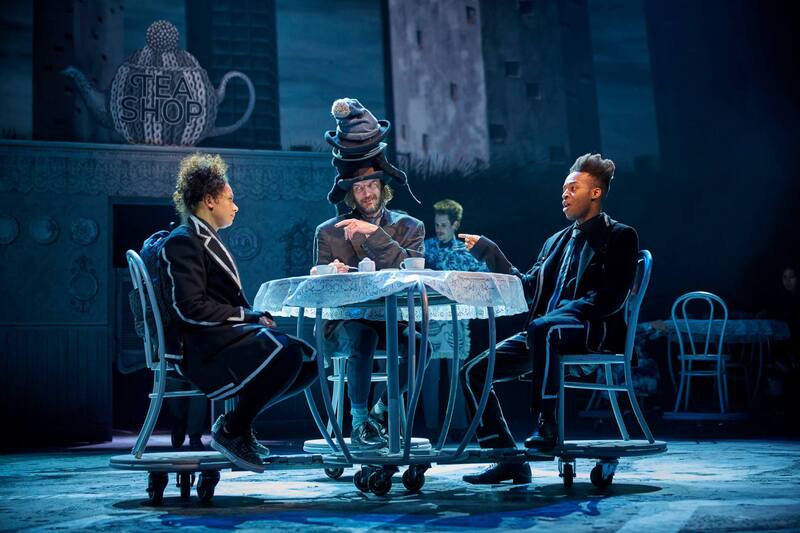

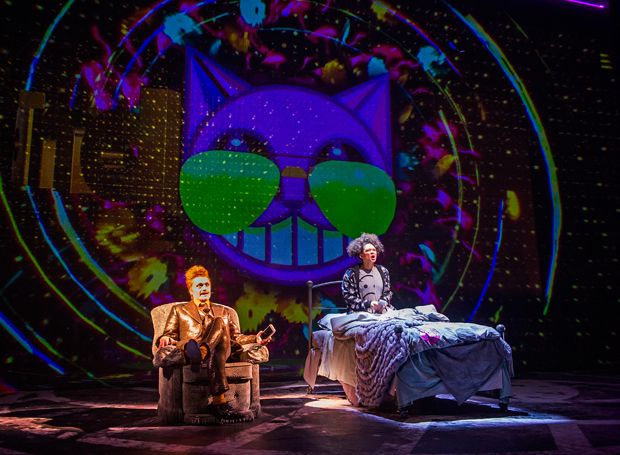

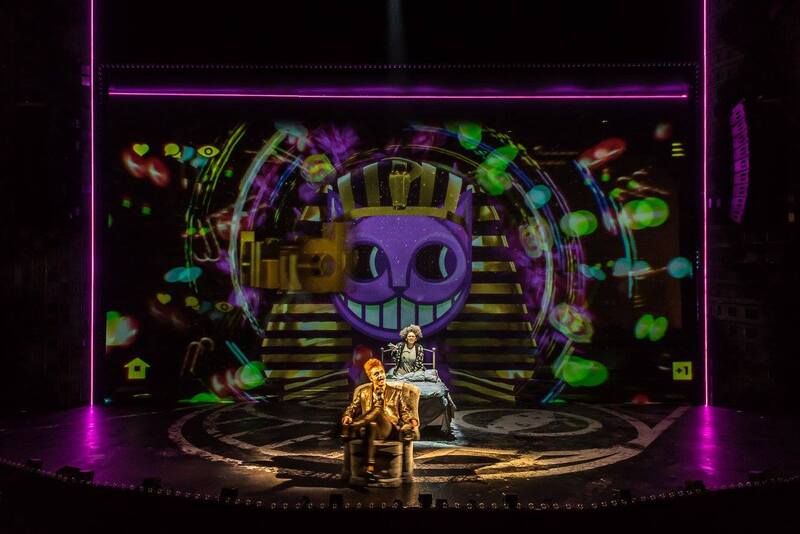

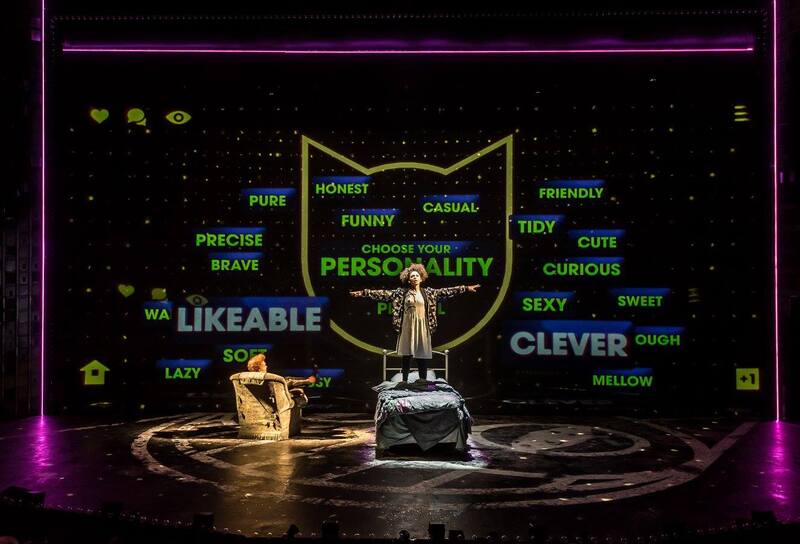









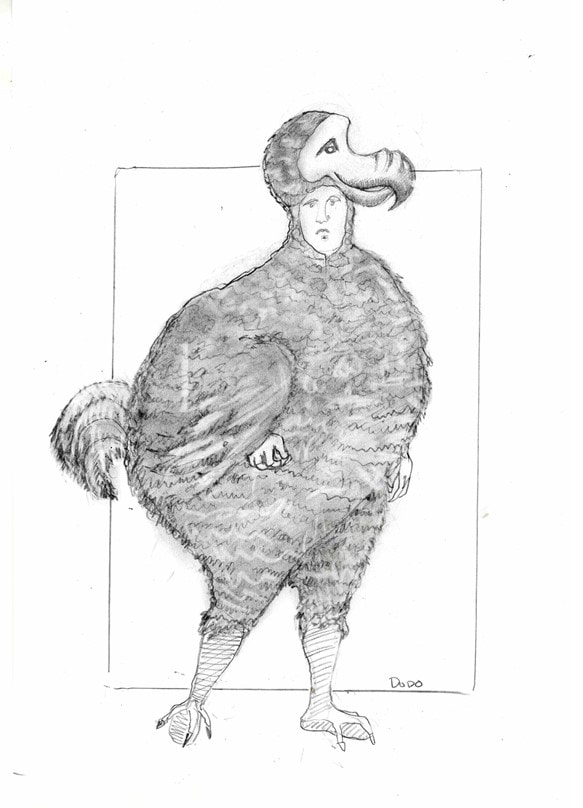





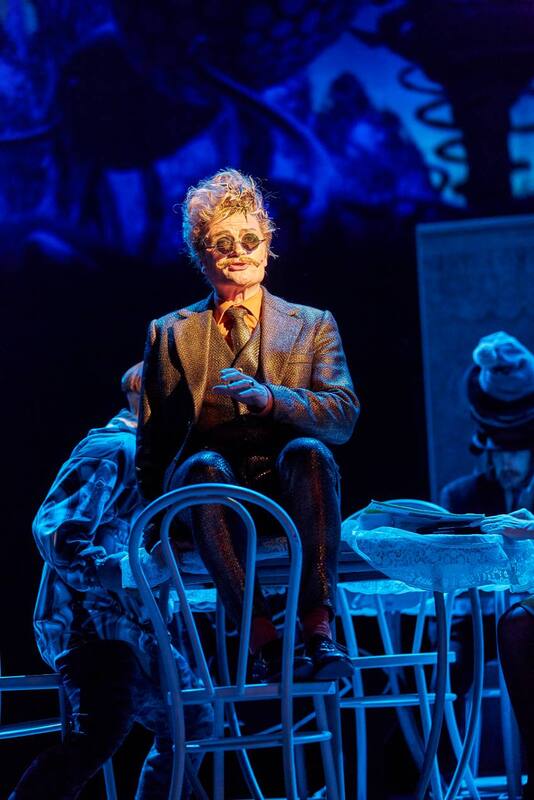


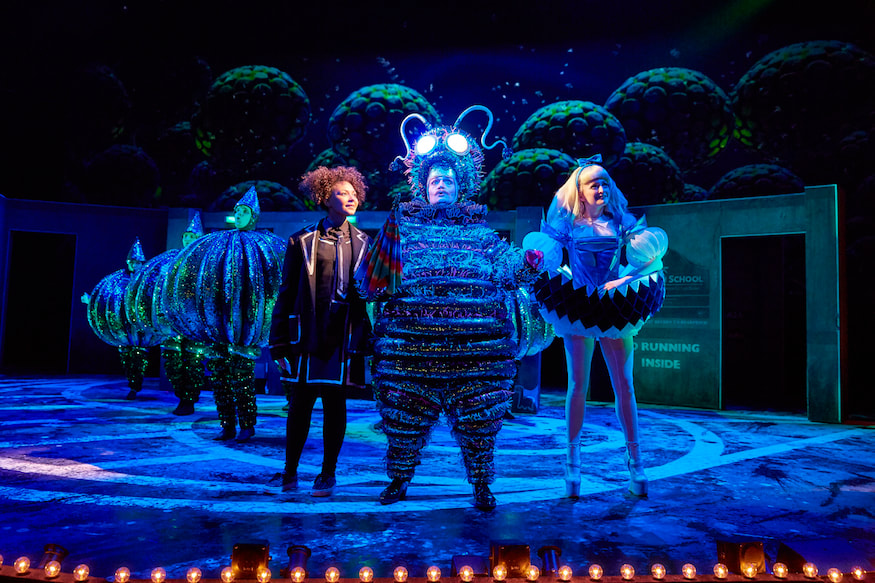






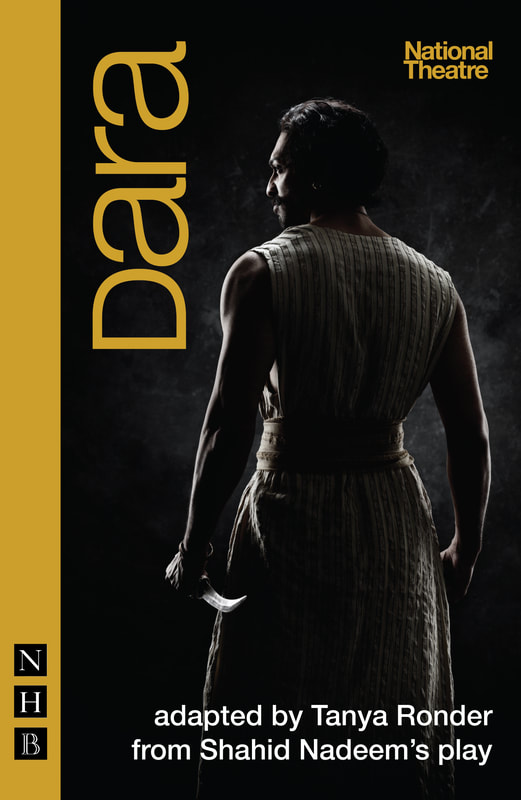







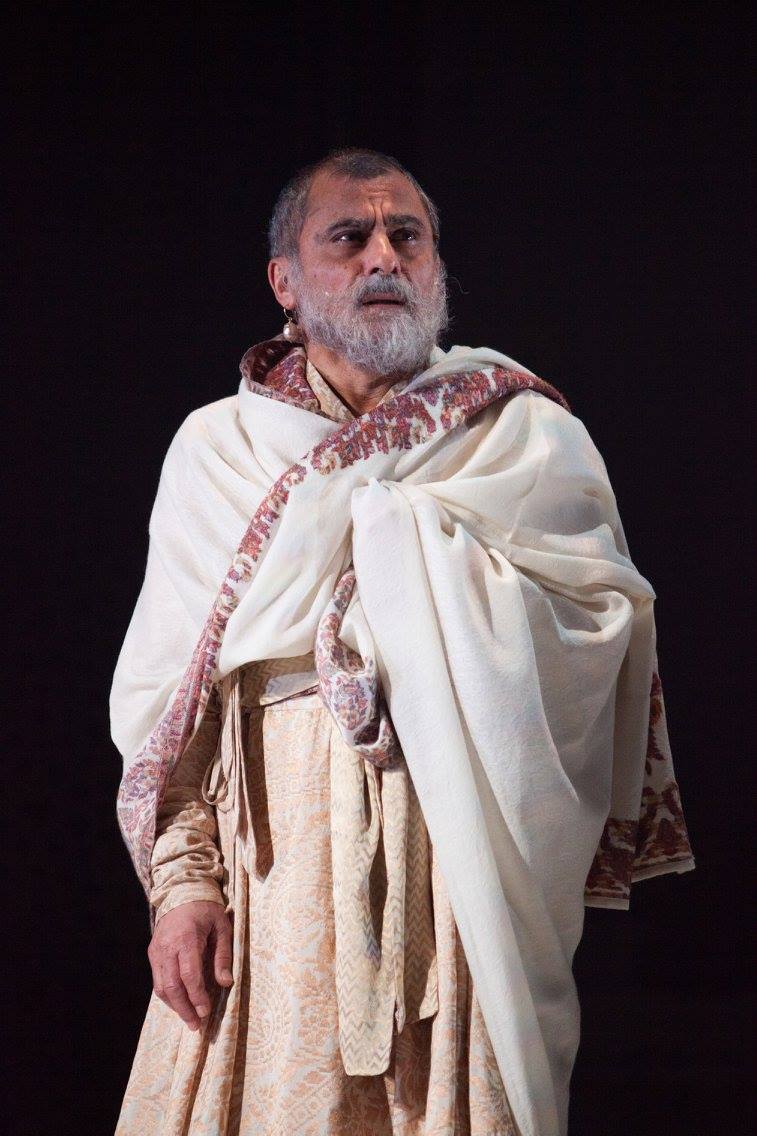

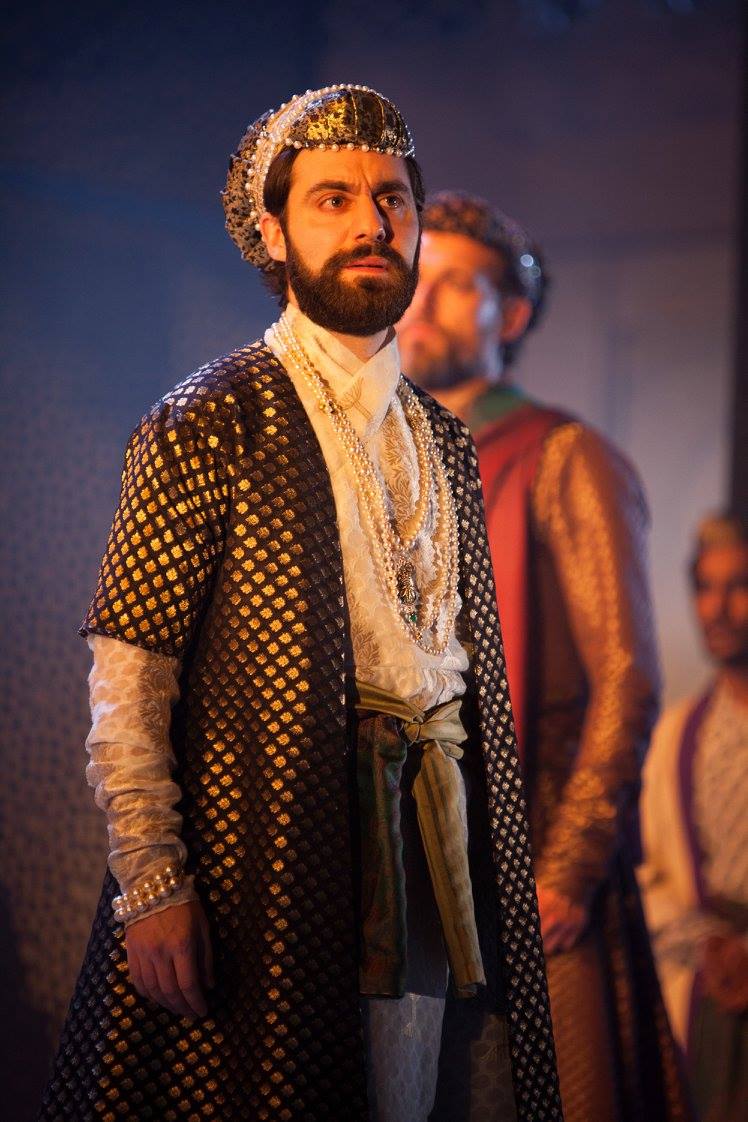


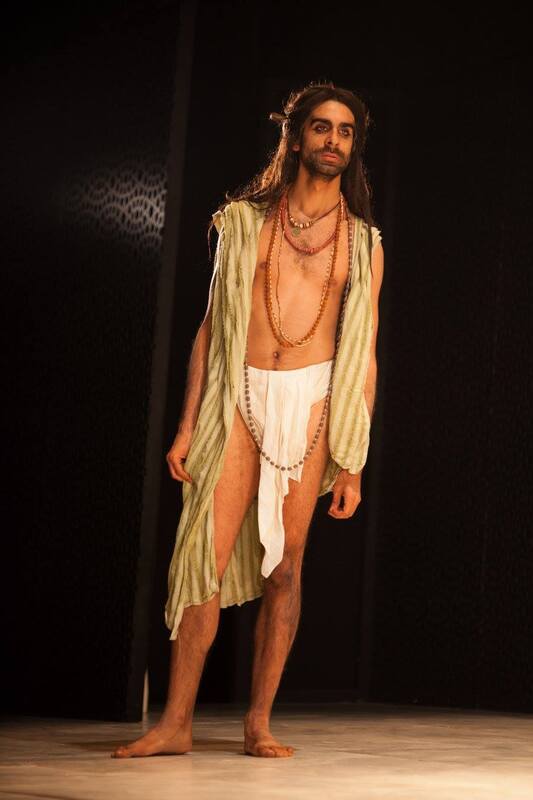





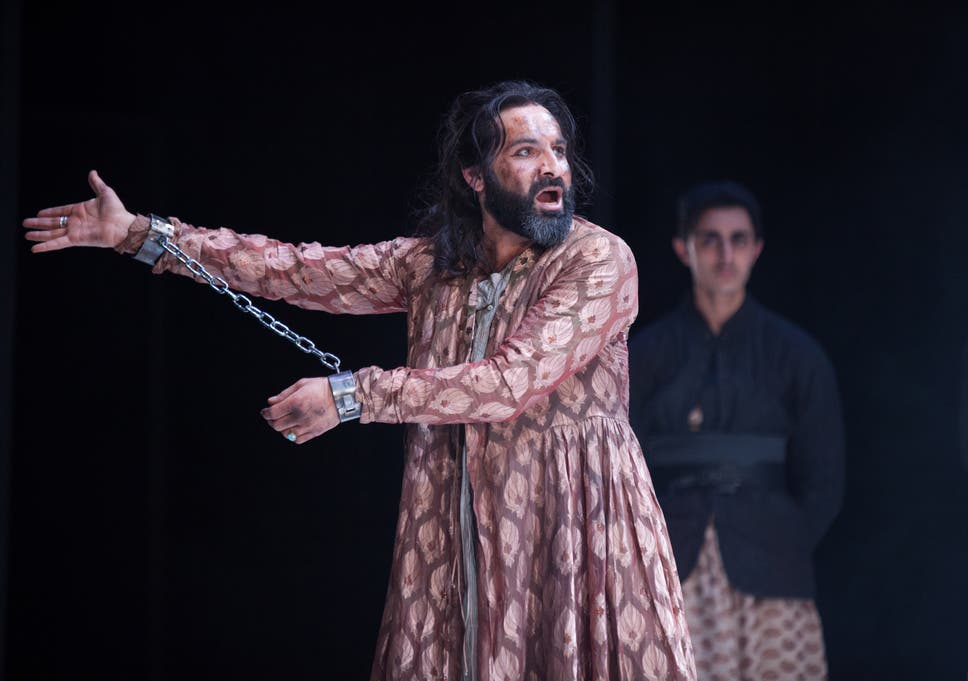




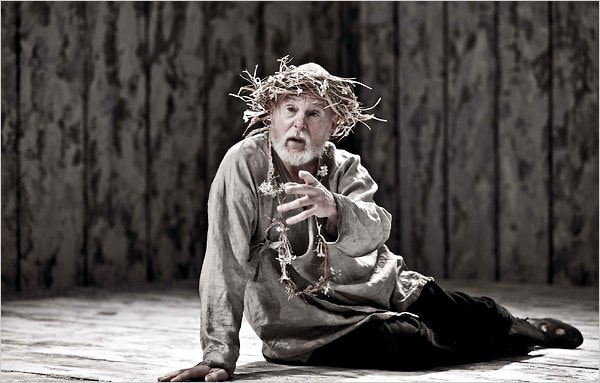

















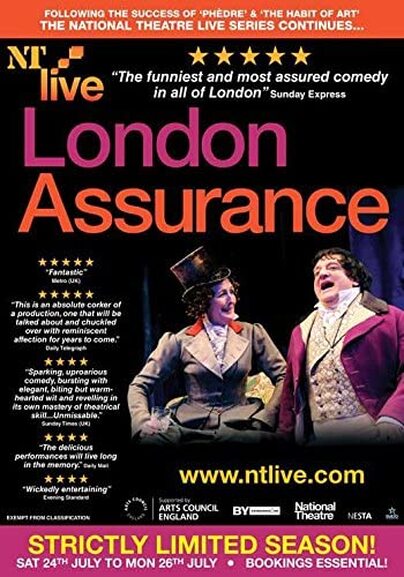
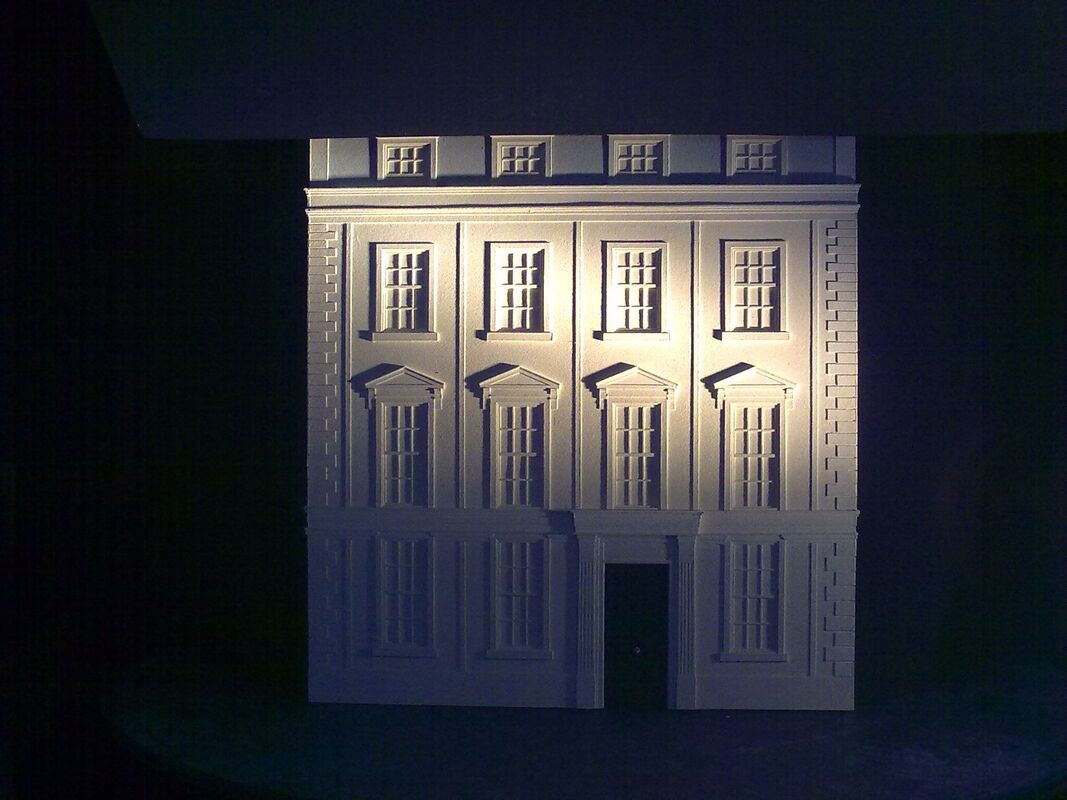



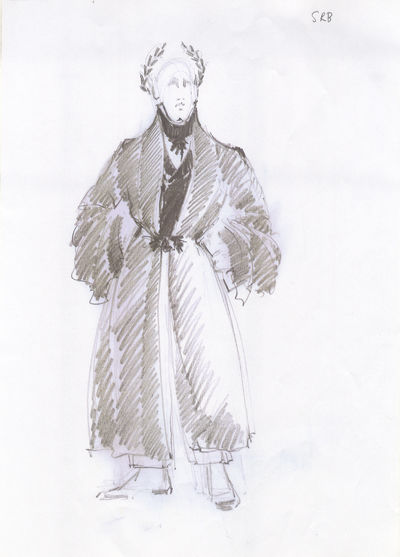




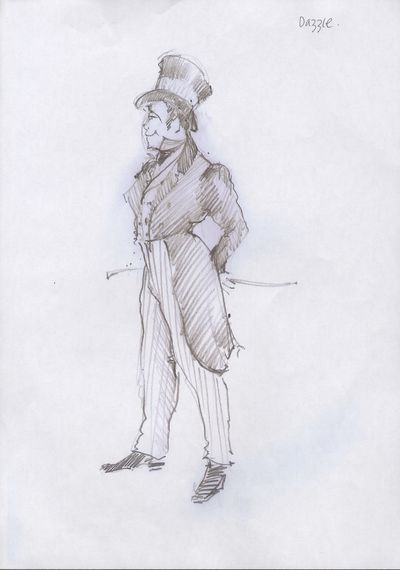






 RSS Feed
RSS Feed